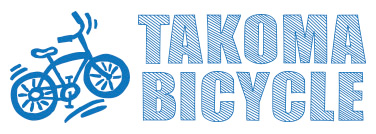
It's more than a matter of preference
Spend anytime along a bike trail and you will see saddles at a wide variety of heights. People will claim they have a personal preference - for instance, they like their feet to touch when in the saddle. However, your saddle height can have a direct impact on the efficiency and comfort of your cycling. Finding the right saddle height enables you to maximize power and spin fluidly. If your saddle is in the right spot, you will improve your handling and comfort and decrease your likelihood of injury.
There are two popular methods for determining the correct saddle height. However, if you want to make sure you've found the ideal height it is always wise to get a professional bike fit.
Method #1: The Heel Test
This method is the most common way to determine your saddle height at home. It will be easiest to perform this test if you have a stationary trainer; however, you can also use a doorframe or countertop to stabilize your bike.
Before performing the test, you need to put on the pair of shoes that you will most frequently be riding your bike in. Flip flops? We wouldn't necessarily recommend them, but if that's what you ride in, that's what you want on your feet.
Next, get on the bike and place yourself comfortably on the saddle with your hands on the handlebars. Place your heels on the pedals. If you're on a trainer, pedal forwards, if you're leaned against a surface pedal backwards.
As you pedal, you want to pay attention to your hips. If your hips rock back and forth as you pedal with your heels, that means your saddle is too high - you are overextending as you pedal.
If your leg can't fully extend to the 6 o'clock position when seated, that means that your saddle is too low.
Adjust the saddle according to the test results. If adjusting up, adjust just until your hips start to rock, and then lower it just a bit from there. The next time you head out for a ride, pay careful attention to how the position feels on the road. Small adjustments may be needed, but you should be very close to the correct height.
Method #2: The Lemond Method
This method earned its title from the famous American cyclist. This method only requires one measurement, and then a bit of math. For this method you will need a tape measure, a straight edge, a pencil and depending on the strength of your math skills, a calculator.
Once again, begin by putting on your cycling shoes. Stand straight with your back against the wall. Bring the straight edge up tight against your inseam and mark the wall lightly with a pencil. Measure from the ground up to the pencil mark. Multiply the measurement by 0.883 to determine your appropriate saddle height.
Now on the bike, measure the distance from the top of the saddle down to the center of the bottom bracket. Adjust the saddle height until it matches the calculated sum from the previous step. This method should put your saddle in the correct ranger - adjustments may be needed after riding, but those adjustments should be minor.
Information found on active.com.


